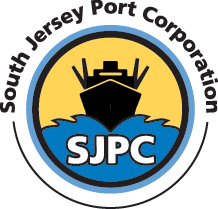A Remarkable Half-Century of Collaboration
Forging lasting partnerships can be a challenging feat for any organization, often discussed but not always realized. The collaboration between Macsteel International and South Jersey Ports (SJP) is a shining example of such partnerships and a remarkable testament to the enduring power of strong alliances.
For over 116 years, Macsteel International has been a leading manufacturer, merchandiser, and distributor of steel and value-added products. With a global presence encompassing cities around the globe such as Amsterdam, Dubai, New York, Houston, Camden, Johannesburg, Cape Town, Hong Kong, Sydney, and Melbourne, Macsteel has firmly established itself as a key player in the steel industry, boasting $244 million in revenues and a dedicated team of 500 employees.
A Handshake Deal That Lasted 50 Years
The partnership between Macsteel and SJP began in the mid-1970s when William (Bill) Matteo, an executive at the time, forged a connection with the port’s then-executive director, Joseph Balzano. Remarkably, the deal was sealed with a handshake, and it has stood strong for half a century.
According to Michael J. Purpura, International Domestic Shipping and Logistic Manager for Macsteel International, who now oversees the SJPC-Macsteel partnership, “We’ve forged a very close relationship through a succession of natural management iterations. Currently, we are working closely with Brendan Dugan, Assistant Executive Director/Chief Commercial Officer who shares the same commitment, focus, and attitude that we do—ensuring excellence in customer service.”
The South Jersey Ports’ Advantages
For Macsteel, the port’s facilities are ideal. Purpura notes, “South Jersey Ports allow easy access to our customers in Pennsylvania, Connecticut, and the Midwest. It’s centrally located on the U.S. East Coast and offers excellent facilities, warehousing, laydown areas for our cargo, and superb highway and rail connections from the port to our customers.”
Moreover, it’s the seamless, “hand-in-glove” relationship that has flourished over five decades that truly sets South Jersey Ports apart. The no-nonsense, “let’s get to it” approach of the port team members resonates deeply with Macsteel, emphasizing the shared commitment to delivering cargo promptly to customers.
Market and Tonnage
Macsteel’s imports through South Jersey Ports vary between 5,000 to 10,000 tons of diverse steel products, largely driven by customer demand. While the Biden infrastructure plan promises a significant surge in steel demand over the next decade, immediate concerns, such as labor issues and supply chain disruptions, are at the forefront of customer priorities.
Purpura explains, “Right now, customers are cautious, managing inventories, and awaiting resolution of labor issues. However, Macsteel and South Jersey Ports remain steadfast in our commitment to delivering, as we have for years.”
As Macsteel and South Jersey Ports continue to navigate the ever-evolving landscape of the steel industry, their enduring partnership serves as a beacon of stability, dedication, and collaboration. Here’s to the next 50 years of success and shared achievements.
“Over the past 50 years, we’ve built a relationship based on trust and a shared goal of superior customer service and meeting supply chain demand. It’s a true honor to celebrate this remarkable milestone together as we look forward to the future,” said Andy Saporito, Executive Director & CEO of South Jersey Ports.



